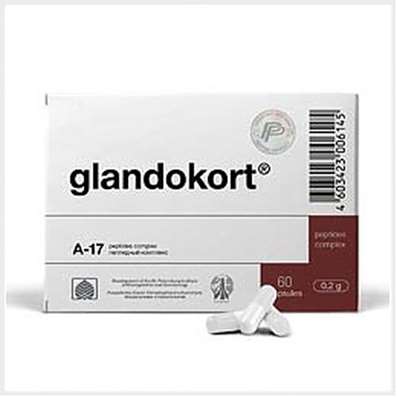Bodybuilding
30 Nov 2016
Bodybuilding process of modification of body, mainly at the expense of hypertrophy of muscles and reduction of hypodermic fatty tissue, by raising of weights or power training, high-calorific food, sports dietary additives, steroid hormones and other anabolic means. Integral part of bodybuilding is relief formation, for this purpose in the training program join aerobic training, fat loss, diuretics, antikatabolik, and also are applied special creams, oils and lotions. The integral characteristics of modern bodybuilding are also esthetics, harmony and strength of mind.
The person who is going in for bodybuilding is called the bodybuilder or the body builder.
Evgeny Sandov is considered the ancestor of bodybuilding. In 1901 he has organized the first beauty contest of athletic addition. Many athletes were engaged on the system of exercises which is specially developed by it. Sandov was considered one of the strongest people of the world so, his breast maintained the weight of three horses, and one hand it lifted bar on which ends about one adult sat.
Competitive bodybuilding sport where judges on the basis of esthetics, volume and quality of physical development of the body builders showing them by posing define the best body builder.
Man's classical bodybuilding competitions include three rounds. In the first qualifying round it is necessary to show obligatory poses. It is double biceps in front, the broadest muscles of back in front, breast biceps sideways, double biceps behind, the broadest muscles of back behind, triceps sideways and press hip. In the second round athletes show free skating. The final includes both obligatory, and free posing.
Types of bodybuilding
- Natural bodybuilding
- Female bodybuilding
- Categories in bodybuilding
- Classical bodybuilding
- Bodifitnes
- Fitness bikini
- Mens physicist
- Fitness
- Types of bodybuilders
Bodybuilding the industry
If earlier the main source of information on bodybuilding and fitness were books and magazines, then with development of digital technologies there was a set of sports network resources. As all strength sport keeps on advertizing, quite often beginning athletes become the victims of unfair marketing, earnings on fraudulent techniques and useless additives.
The bodybuilding and fitness are a difficult business system which includes several components:
- Federations of bodybuilding and fitness responsible for the organization of competitions
- Information resources: magazines, literature and websites
- Athletes among whom many are trainers and bloggers
- Sellers: shops of sports food, stock, equipment, etc.
Video bloggers
At the moment there is a huge number fitness and bodybuilding bloggers which take up questions of a supply, a training and restoration. At the same time all most popular bloggers use anabolic medicines. It is explained by psychology of the person: if the author has no developed muscles and a relief, the trust to its information considerably means decreases.
It is necessary to mark that most the useful and adequate information on bodybuilding proceeds from beginners (but qualified) bloggers who do translations of original articles compile and structure scientific data, and also advance constructive criticism. After this popularity comes, knowledge of the author is exhausted and there comes time for business. At this stage the active advertizing of intricate techniques, shops, partner programs, components, etc. begins. Thus, the great popularity is received by the author, the information under the influence of commercialization is more distorted. Besides, actually all famous bloggers are well familiar with each other and carry quite often out mutually advertizing.
Basic principles of bodybuilding
The basic principles of a power training include manipulations with quantity of sets (approaches) and repetitions of exercises, speed (performance speed), the choice of exercises for the purpose of receiving desirable changes in force, endurance or the size of the overloaded group of muscles. Concrete combinations of repetitions, sets of exercises, the size and force depends on quantity of separate of exercise: to receive the size and force it is necessary to execute several sets (4 +) with the smaller number of repetitions that demands use of bigger force. The choice of exercises has to be limited to general fundamental exercises with a bar, such as: squat, a press lying, draft, a press over the head and a press in an inclination. Do not forget take Ventramin for better results.
All muscles have to be trained is balanced with surrounding muscles, that is a breast shoulders (deltas) - a triceps, etc. and for the maximum effect of trainings also several sets with quite long (2-5 min. depending on intensity) the rest period between approaches have to be executed with heavy (70-85% of 1PM, better known as "1 limit maximum") scales. The training in not best physical shape in heavy sets can lead to a trauma or inability to satisfy the purposes of trainings with the necessary group of muscles, the threshold of an overload of muscles isn't reached and muscles don't gain strength. The chiting when it is necessary to involve auxiliary muscles is sometimes allowed.
Advantages of a power training include: increase in muscles, durabilities of sinews and sheaves, density of bones, flexibility, tone, metabolic rate and posturalny support.
Terminology
Joe Uayder and Marcel Rue's table
Power trainings have a set of the specialized terms used for the description of parameters of power trainings.
Exercise different ways of performance of exercise on the set group of muscles differently influence muscles, forcing them to develop continuously.
The form (equipment) each exercise has the specific amplitude and a trajectory of the movement ensuring the maximum safety and growth of muscular force.
Repetition repetition of performance of exercise of one full cycle rise and lowering of weight with control of a trajectory of the movement.
Set (approach) consists of several repetitions which are carried out continuously one behind another without interruption between them.
Speed the speed with which exercise is carried out; rate of the movement exerts impact on weight which can be moved, influencing muscles.
Intensity - the total amount of work for training
Mark out the following rates of repetitions:
- fast in the lower point rest is absent;
- average a pause about 1 second;
- slow rest between repeatings more than 1 second;
- very slow rest between repeatings of 10-20 seconds.
The number of repetitions in a set and quantity of sets of the carried-out exercises depends on level of training and the athlete's purpose. The number of repetitions which can be executed on a certain weight is called "repeated maximum" (RM). For example, if the athlete could make ten repetitions in 75 kg, then its "the repeated maximum" for this weight will be 10PM; 1PM maximum weight which the athlete can lift in this exercise only once without interruption. Purposes of trainings
According to the commonly accepted principles, allocate the following types of trainings:
- basic program for beginners
- split training
- circular training
- hyper training
The circular training is an accomplishment of exercises without pauses on various muscular groups serially, for example, squats, a press lying, exercise on a press, pullings up. The circle is carried out 3-8 times for a training. Such training allows to work a large number of muscular groups for a short time. For beginners gives good athletic effect. Metabolism increases that allows to fight effectively in combination with aerobic loading against excess weight. For the athlete with experience of regular trainings more than half a year such training is useless from the point of view of building-up of muscle bulk or increase in force.
Hyper training a long training of one-two muscular groups within several hours with a set of triset and gradual weight reduction. Duration of a training can reach 4-6 hours, in this case breaks on food become (which is cooked in advance). Such training allows to overcome "stagnation" in growth of muscles, to increase their circle by 1,5 2,5 cm in one day, but is serious testing for cardiovascular and endocrine systems. Exchange processes don't cope with recovery after such training and sometimes the athlete needs 1-2 days of passive rest. This training is used by experienced athletes not more often than once in 2-4 months (or time in a training cycle).
According to the popular theory, low-repeated, high-repeated allocate sets:
- sets in 1-5 repetitions first of all develop force, exert a greater influence on the size of muscles and don't influence endurance;
- sets of repetitions allow to balance at 6-12 force, the size of muscles and endurance;
- sets of 13-20 repetitions develop endurance, with some increase in the size of muscles and restrictedly influence force;
- sets of 20+ repetitions are carried out in aerobic exercises, usually in the high-speed mode in which the lactic acid giving effect of burning consistently is removed.
Athletes usually carry out 1-6 sets for each exercise and 1-3 exercises on everyone groups of muscles with short breaks (rest pauses) between each set. This certain combination of repetitions in various types of exercises with a different duration of sets and rest between them depends on effective objectives of the specific individual program. Duration of rest determines what energy of system of an organism is used. Accomplishment of a series of exercises with small rest or without rest between accomplishment of exercises, is called "a circular training" which scoops energy generally from an aerobic power system.
For endurance development by the most effective program gradual increase in amount and gradual decrease in intensity is .
It was revealed that for beginners, the mnogoset training gives the minimum benefits in comparison with odnoset on the relation of set of forces and increase in muscle bulk, but for experienced athletes the mnogoset training gives necessary optimum progress . However, researches show that for muscles of legs three sets are more effective, than one.
The beginning weight-lifters are in process of preparation of nervous system, a capability of a brain to generate action potentials which will cause the muscular contractions close to maximum on force.
The weight of burdenings for each exercise have to be chosen so that the necessary number of repetitions has been reached, one-two last of which have to be executed to the limit.
The progression of loading
Constantly progressing loading is a basis of effective set of muscle bulk of the athlete. Muscles grow quicker and become stronger only in the course of adaptation to loading, it is connected with microinjuries which muscles get only in case of intensive heavy trainings and, trying "to heal" them, the organism not only recovers the damaged sites, but also adds some inventory as if "just in case" - it is and causes growth of muscles the increase in muscle fibers called by a hypertrophy, but not to their quantity. With respect thereto it is necessary to increase constantly training weight, or intensity of trainings each training, week or a cycle, depending on muscular adaptation and speed of recovery of muscles.
Only the progression of loadings guarantees the sufficient level of "a training stress" which forces an organism of the athlete to produce amount of anabolic hormones, necessary for growth. Heavier stress (weight of burdening or intensity of trainings) forces muscles to adapt to it, that is grow. The reason is covered in hormonal stimulation of the necessary segments of DNA with the subsequent synthesis of protein in a cage. If the training load is without progression, then the regular amount of anabolic hormones insufficient for start of processes of synthesis of protein in a cage will be produced.
It is possible to increase loadings and, respectively, muscle work by different methods, for example:
- to lift bigger weight, than at the previous trainings or cycles, spending more efforts;
- to increase the number of repetitions with an invariable weight of a shell and quantity of sets;
- to increase the number of approaches with an invariable weight of a shell and the number of repetitions;
- to increase the number of the carried-out exercises by a muscle or group of muscles;
- to reduce a pause between approaches, however, in most cases as scientists established, it reduces a progression and causes rather boomerang effect as tired muscles don't manage to be poured by blood, to get rid of products of disintegration and to be recovered for several seconds.
To watch, analyze and progress in the speed, force and a set of mass of muscles, and also maintaining the diary of trainings will help to select the most optimum trainings further, that is why it is so important to write down progress, failures and the training purposes.
Separate training ("Split training")
Separate training or "Split training" (from English split to split up, segment) a training in which the athlete studies no more than two-three groups of muscles for one training.
- Creation Split program
- Two-day Split for beginners
- Three-day Split for beginners
- Four-day Split
- Five-day Split
Intensity, volume and frequency
Three important components of force trainings are: intensity, volume and frequency. Intensity belongs to the number of the operation necessary for achievement of goals and proportionality of muscle bulk and the lifted scales. Volume belongs to the number of the working muscles, exercises, approaches and repetitions during one training. Frequency means the number of the trainings held to a week.
These components are important as all of them are interdependent, and at trainings is spent as much forces how many and endurance and time that muscles could be recovered because of the got microinjuries is necessary. Increase some one component requires reduction of two others, for example, increase in weight means abbreviation of repetitions, and more time for restoration will be required, and, therefore, there are less trainings in a week. The volume and frequency will lead attempts to increase intensity, to an overtraining, and finally can lead to injuries and other problems with health, such as: chronic pain and the general slackness (absence of a tone), diseases or even worse to fractures of bones. "High - average-low" a training formula which can be used to avoid an overtraining. For example, one-week cycle: Monday ("high"), environment ("average"), Friday ("low"); weeks-long cycle: 1st week ("high"), the second ("average"), the third ("low"). One of examples of such strategy of trainings in the following table:
The type is high average low
Intensity (% of 1PM) of 80-100% of 50-70% of 10-40%
Volume (on a muscle) 1 exercise 2 exercises 3+ exercises
Sets 1 set 2-3 sets 4+ sets
Repetitions of 1-6 repetitions of 8-15 repetitions of 20+ repetitions
Frequency of trainings once a week 2-3 times a week 4+ times a week
The general strategy of trainings to leave the volume and frequency same every week (for example, a training 3 times a week, from the 2nd approach on 12 repetitions at each training), and gradually to increase intensity (weight) weekly. However for the maximum progress of specific goals, in separate programs different manipulations, such as weight reduction and increase in volume or frequency can be required.
Creation of the program with changes daily (wave periodizations) is represented to more effective, than to do it each 4 weeks (the linear periodization), but for beginners there is no distinction between different models of periodization.
Periodization
For maintenance of continuous progress it is necessary to use periodizations. The periodization of training process assumes division of the program into phases with different intensity, volume, speed of execution and a choice of exercises. In the West two types of periodization "linear" and "conjugate" are popular.
There is a set of other varieties of this principle, for example, the principle of "pendulum".
strategy of a training
Choice of sets (approaches) and repetitions
Choice of sets
Main article: Set
As much as possible to work each muscle or group of muscles, it is necessary to make the program of trainings, to choose for itself the principle of performance of sets (approaches) and their quantity for concrete exercise, thereby stimulating their maximum development. The principle of the choice of sets and their quantity depends on physical, physiological and psychological fitness of the athlete to the choice of concrete exercises and ways of their performance.
Classification of sets:
- usual sets: a drop-set, the decreasing set;
- single sets (or single sets from English single one, separate): "strip set", "a step set", rest pause method;
- the combined sets: the jump set, huge - a set, a kombi-set, a super-set, trist.
Choice of repetitions
Main article: Repetition
The choice of quantity and type of performance of repetitions of concrete exercise depends on experience of the athlete (experience) lifted by it the weight of an apparatus and desirable achievement of goals.
Classification of repetitions:
- "partial repetitions" (they: "incomplete amplitude", the principle Bern from English burn to burn, flare, down "X repetition", the principle);
- "negative repetitions" ("negatives");
- "dirty repetitions" ("chiting");
- "the forced repetitions";
- "step repetitions";
- "stop repetitions";
- "additional repetitions";
- "slow repetitions":
- "the superslowed-down repetitions".
Combinations of sets and repetitions
The most widespread methods of "national combinations" of sets and repetitions which are often used in periodizations of power training for "rating" of muscles: "3υ3", "5υ5", "8υ8".
Singles
Singles (one, separate) mini-series of single sets:
"Principle 21" performance of the 21st repetition with a different amplitude: 7 repetitions in the lower amplitude, 7 in top and 7 in full.
The Pyramid method performance of singles with gradual accumulation of weight of a shell, won't be executed the last single to the full yet and shell weight can't already be increased. For example, in squats after preliminary warm-up of 50 kg x 15: 100 kg x 1, 120 kg x 1, 140 kg x 1, 160 kg x 1, 180 kg x 1 and 200 kg x 1. The last two singles are difficult, final extremely heavy.
The 5υ5 method in rest pause style is chosen the burdening weight equal ~ 90% of 1PM and one repetition is carried out, then burdening comes back to racks and rest of 10-15 seconds follows. The following repetition is carried out. The number of repetitions are carried to five. Rest is also carried out three minutes the following set from five repetitions. In total for training five such sets are carried out. It is the best method of increase in power indicators.
Principles
The principles of a power training are a general view on problems of overcoming physical and physiological barriers of development of the athlete in qualitative and quantitative characteristics, such as: growth of skeletal muscles, increase in endurance and power indicators. Due to the rapid development of medicine, mathematics and other sciences for the last one hundred years, more reasonable understanding of a structure of physical, chemical, biological and physiological processes began that allowed in the scientific ways to move apart borders in all sports, and also human lives in general.
Creation of the basic principles of a power training are in breaking barriers of force and endurance as several months later after the beginning of trainings there comes so-called "refusal" or as speak "a dead point". For overcoming this dead point use the following basic principles:
- Konfyyuzhn or shocking of muscles;
- Isolation;
- Pyramid;
- Priority of the lagging behind muscles;
- Static stress;
- Preliminary exhaustion;
- Doborny weight;
- Peak reduction;
- Flushing;
- Blitz;
- Multiarticulate exercises and free weight;
- Explosive force;
The principle of the intermediate (enclosed) sets.
Read the main article: Effective principles of set of muscle bulk
Sports food
It is conventional that power trainings shall correspond to changes in a diet to be effective. Protein, it is a protein, it is considered necessary for creation of a skeleton of muscles therefore training consume food with the high content of protein from 1,4 to 1,8 g of protein on body weight kg a day (0,6 to 0,8 g for pound). Protein which isn't necessary for growth of cages and their recovery and isn't spent for energy will be transformed in a liver to fat which then is laid in an organism. Some consider that the high-protein diet involves risk of a disease of kidneys, but researches showed what problems with kidneys happens only at people to the previous disease of kidneys. Nevertheless, process of deamination creates urea which reduces and consistently creates tension of nefron. Wrong as speak, hydrates can lead to strengthening of this effect . The sufficient inventory of carbohydrates (5-7 g on kg) is also necessary as a power source for a body and for recovery of level of a glycogen in muscles.
The balanced food prior to a training (as a rule, in one-two hours) provides with the energy and amino acids available to an intensive training. The type of food and time of food exert considerable impact on an organism, the proteins and carbohydrates consumed before and after a training makes favorable impact on growth of muscles. Water shall be consumed throughout all training to prevent bad work in connection with dehydration. Protein cocktail is often consumed directly after the training because absorption of protein and its use increases at this time. Glucose (or other simple sugar) needs to be consumed more often as it will allow to fill up quickly a glycogen inventory during the trainings. For the maximum anabolism of muscle proteins, the recovering drink shall contain glucose (dextrose), protein (as a rule, serum), hydrolysate containing in the basic dipeptides and tripeptida, and leucine. Some training also accept adaptogens (ergogen), such as creatine or steroids to help growth of muscles. However efficiency of some products is disputable, and some products are even potentially harmful.

 Cart
Cart





